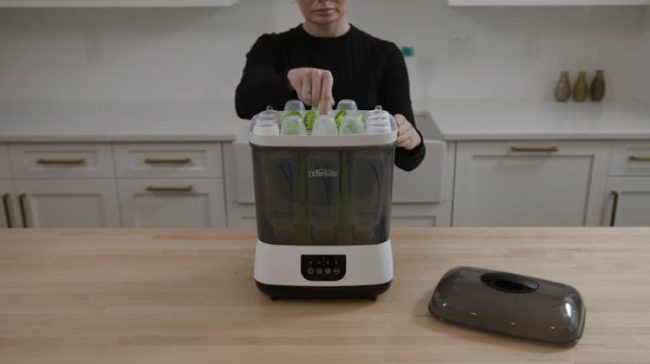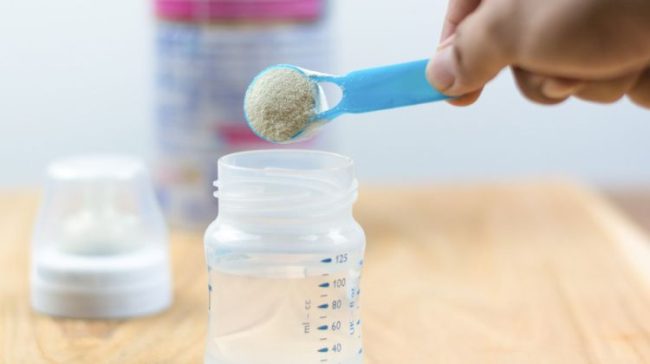For many new parents, a bottle warmer becomes a staple in the feeding arsenal. Whether you’re exclusively formula-feeding, pumping breast milk, or combining both, a quick and safe method to warm bottles can be a lifesaver during those late-night feedings. But with so many options available, choosing the right bottle warmer can feel overwhelming. This guide delves into the essential factors to consider, helping you select the warmer that fits your specific needs and budget.
What is a Baby Bottle Warmer?
A baby bottle warmer is a device designed to heat milk or formula to the ideal temperature for baby feeding, mimicking the natural temperature of breast milk. This is crucial because feeding babies milk that is too hot or too cold can lead to discomfort or health issues.
Do You Really Need a Bottle Warmer?
Before we dive into features, let’s address: do you really need a bottle warmer? Not every family needs a bottle warmer. Here are some alternatives to consider:
- Running warm water: This simple method works well, but requires constant monitoring to avoid overheating.
- Bowl of warm water: Similar to the above, but less precise and can cool down quickly.
- Room temperature milk: Many babies eventually accept milk at room temperature, especially older babies.
Importance of a Bottle Warmer
Before diving into the specifics of selecting a bottle warmer, it’s crucial to understand why it’s a valuable addition to your baby essentials. The primary reason is consistency and safety; a bottle warmer evenly heats the milk to a safe temperature, reducing the risk of hot spots that can scald your baby’s mouth, a common issue with microwave heating. Moreover, for breastfed babies, it helps in preserving the nutrients and antibodies of breast milk which can be compromised with improper heating methods.
The Importance of the Right Temperature
The right temperature for baby milk is around 98.6 degrees Fahrenheit (37 degrees Celsius), which is the average body temperature. This temperature ensures that the milk is comfortable for the baby to consume and helps in preventing the degradation of essential nutrients. A good bottle warmer should heat the milk evenly without creating hot spots, which can scald the baby’s mouth.
Factors to Consider When Choosing a Baby Bottle Warmer
1. Type of Bottle Warmer
There are several types of bottle warmers, including electric steam warmers, water bath warmers, and portable warmers. Electric steam warmers heat bottles quickly but require careful monitoring to avoid overheating. Water bath warmers heat more evenly and gently, which is closer to the natural warming process but might be slower. Portable warmers are designed for on-the-go use, often powered by a car adapter or battery, offering convenience but typically with less precision.
2. Compatibility with Different Bottles
Not all bottle warmers are compatible with every type of bottle. Consider the size and shape of the bottles you use, including whether you’ll need the warmer to accommodate wide-neck bottles, disposable bottles, or glass bottles. Some warmers come with adjustable baskets or rings to fit various bottles, which can be a versatile solution.
3. Warming Efficiency
Efficiency is measured by how quickly and evenly a bottle warmer can heat a bottle to the desired temperature. Look for models that offer consistent warming without requiring multiple cycles to reach the correct temperature. Efficiency also extends to how the warmer handles frozen milk or formula, a crucial feature for parents who store milk in the freezer.
4. Safety Features
Safety features are very important when selecting a bottle warmer. Automatic shut-off is a crucial feature that prevents overheating by turning the warmer off once the milk reaches the desired temperature. A timer or visual/audible alerts can also enhance safety and convenience.
5. Ease of Use
A user-friendly design with straightforward operation is essential, especially for feedings during the night.
6. Ease of Cleaning
Regular cleaning is essential to prevent the build-up of milk residue and bacteria. Look for bottle warmers with detachable parts that are easy to clean and dry. Models with fewer crevices and simpler designs will generally be easier to maintain in the long run.
7. Portability
If you travel often or need to move around the house, consider a compact and lightweight model. Some warmers are designed for use in cars via a USB port or adapter.
8. Budget
Bottle warmers range in price from relatively inexpensive to high-end models with advanced features. Determine your budget beforehand but consider investing a bit more for durability and essential features.
9. Additional Features
Some bottle warmers come with extra features that can enhance their convenience and usability. These may include a defrost setting for frozen milk, a nightlight for late-night feedings, or a digital display with precise temperature control. Consider which features align with your needs and lifestyle.
Assessing Your Needs
Before making a purchase, assess your specific needs:
- Frequency of Use: How often you’ll use the bottle warmer can influence the type you choose. Daily use might justify a more robust, feature-rich model, while occasional use could mean a basic model suffices.
- For Busy Parents: If you’re often multitasking, look for a bottle warmer with a fast heating cycle and automatic shut-off.
- For Nighttime Feedings: Features like a nightlight or a quiet operation can be invaluable for minimal disruption.
- For Parents of Multiples: Consider a double bottle warmer that can accommodate more than one bottle at a time.
- For On-the-Go Families: A portable, car-compatible warmer is essential for travel.
Tips for Using Your Bottle Warmer Safely and Effectively
- Read the Manual: Before first use, thoroughly read the manufacturer’s instructions to understand how to operate the warmer safely and effectively.
- Test the Milk Temperature: Always test the milk temperature before feeding to avoid burns. You can do this by sprinkling a few drops on the inside of your wrist.
- Avoid Microwaving Milk: Microwaving can create hot spots and degrade nutrients. A bottle warmer ensures even heating and preserves the quality of the milk.
- Regular Maintenance: To ensure longevity and optimal performance of your bottle warmer, regular cleaning and maintenance are crucial. Always follow the manufacturer’s instructions for cleaning. Generally, it’s recommended to descale the heating element regularly, especially if you have hard water, to prevent buildup and ensure efficient heating.
Final Thoughts
In the realm of baby care, the right tools can make all the difference. A baby bottle warmer is more than just a convenience; it’s a tool for ensuring your baby’s nourishment is delivered safely and comfortably. Hope the above guide enlightens you with all the necessary information on how to choose the right baby bottle warmer for your needs.
By taking the time to assess your requirements and understanding the features that matter most, you can find a bottle warmer that not only simplifies the feeding process but also ensures your baby enjoys their milk just the way they like it—warm, safe, and nutritious.
Frequently Asked Questions (FAQs)
1. Is it really necessary to have a baby bottle warmer?
While not absolutely necessary, a baby bottle warmer is a convenient tool for many parents. It helps quickly and evenly warm milk to the ideal temperature for your baby, which is especially helpful during night feedings or for parents who frequently need to heat stored breast milk or formula.
2. Can I just use a microwave or stovetop to warm my baby’s bottle?
It’s not recommended to use a microwave to warm a baby’s bottle because it can create hot spots in the milk, leading to the risk of burning your baby’s mouth. Additionally, microwaving can degrade the nutrients in breast milk. Using a stovetop is possible but less convenient and can also lead to uneven heating. A bottle warmer provides a safe, quick, and even heating method.
3. How do I know the milk has reached the right temperature?
Most bottle warmers have an indicator light or beep to signal when the warming cycle is complete. However, it’s always best to test the milk’s temperature before feeding by putting a few drops on the inside of your wrist. The milk should feel warm, not hot.
4. Can I leave water in my bottle warmer when it’s not in use?
It’s generally not recommended to leave water in the warmer when it’s not in use as it can lead to mineral deposits or even mold if left for extended periods. Always refer to the manufacturer’s instructions for maintenance and cleaning recommendations.
5. How do I clean my bottle warmer?
Cleaning instructions vary by model, but most recommend wiping the warmer with a damp cloth after each use and ensuring it’s dry. For descaling (to remove mineral deposits), manufacturers often suggest using a mixture of water and vinegar. Check your user manual for specific instructions.
6. Are bottle warmers safe for all types of bottles?
Most modern bottle warmers are designed to be compatible with various bottle materials, including plastic, glass, and silicone. However, it’s essential to check the compatibility with your specific bottle warmer model, as some may have restrictions or require adapters for different bottle sizes or materials.
7. Can I use a bottle warmer to thaw frozen breast milk?
Many bottle warmers come with a defrost setting specifically for thawing frozen breast milk safely and gently, preserving its nutritional quality. Always check if your model has this feature and follow the instructions for use.
8. How long does it take to warm a bottle?
The time it takes to warm a bottle can vary depending on the starting temperature of the milk (e.g., refrigerated vs. room temperature), the volume of milk, and the model of the bottle warmer. Generally, it can take anywhere from a few minutes to around 10 minutes.
9. Is there a risk of overheating the milk?
If used correctly according to the manufacturer’s instructions, the risk of overheating is minimal. However, it’s crucial to always test the milk’s temperature before feeding and not to reheat the same milk multiple times. Look for a warmer with an automatic shut-off feature to minimize this risk.
10. Can I warm baby food jars in a bottle warmer?
Many bottle warmers are also suitable for warming baby food jars. Check your bottle warmer’s specifications and instructions to ensure it’s safe and to understand how to use it for this purpose effectively.



